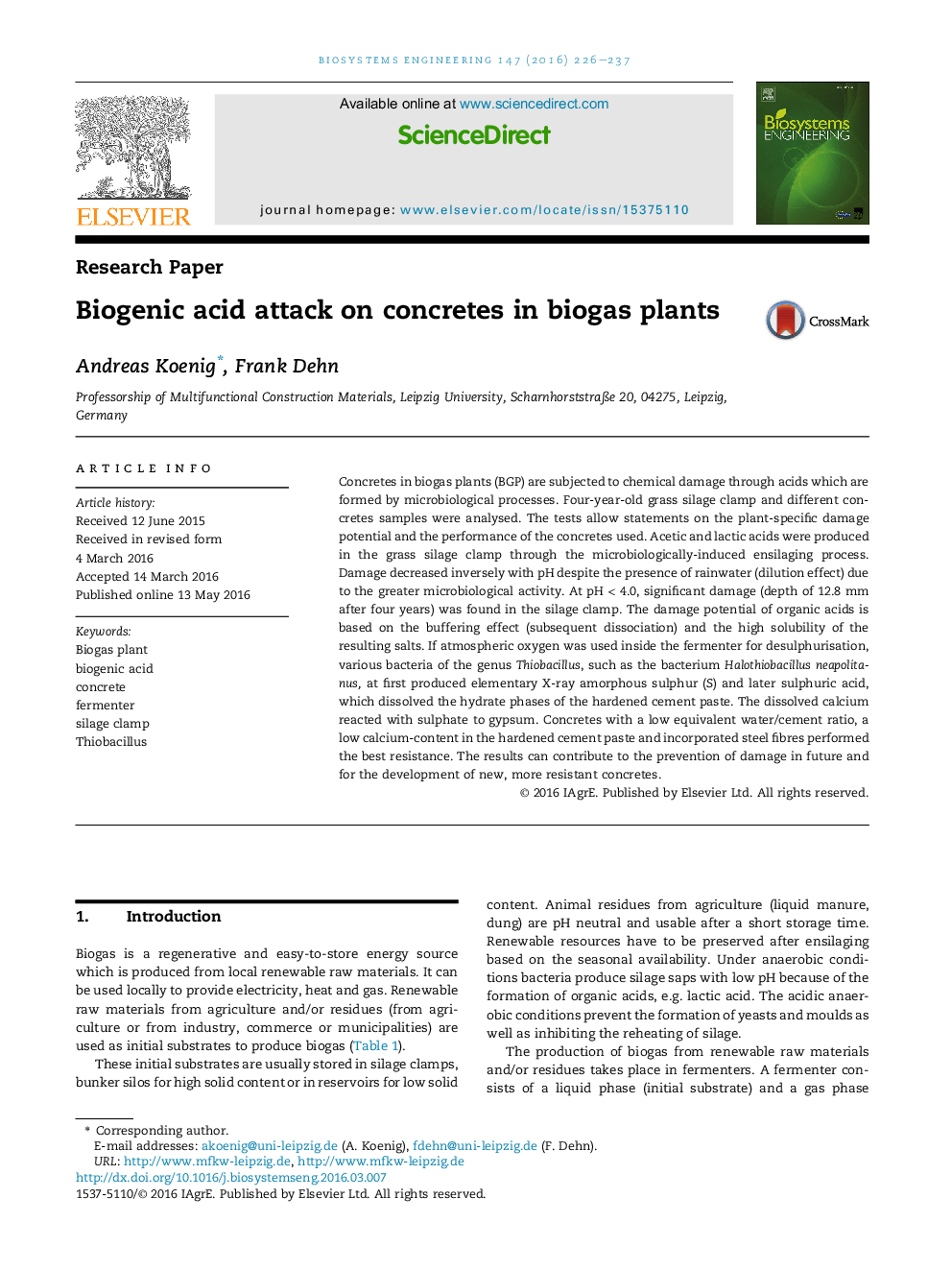| کد مقاله | کد نشریه | سال انتشار | مقاله انگلیسی | نسخه تمام متن |
|---|---|---|---|---|
| 1710810 | 1519514 | 2016 | 12 صفحه PDF | دانلود رایگان |
عنوان انگلیسی مقاله ISI
Biogenic acid attack on concretes in biogas plants
ترجمه فارسی عنوان
حمله اسید بیوژنیک به بتن در گیاهان بیوگاز
دانلود مقاله + سفارش ترجمه
دانلود مقاله ISI انگلیسی
رایگان برای ایرانیان
موضوعات مرتبط
مهندسی و علوم پایه
سایر رشته های مهندسی
کنترل و سیستم های مهندسی
چکیده انگلیسی
Concretes in biogas plants (BGP) are subjected to chemical damage through acids which are formed by microbiological processes. Four-year-old grass silage clamp and different concretes samples were analysed. The tests allow statements on the plant-specific damage potential and the performance of the concretes used. Acetic and lactic acids were produced in the grass silage clamp through the microbiologically-induced ensilaging process. Damage decreased inversely with pH despite the presence of rainwater (dilution effect) due to the greater microbiological activity. At pHÂ <Â 4.0, significant damage (depth of 12.8Â mm after four years) was found in the silage clamp. The damage potential of organic acids is based on the buffering effect (subsequent dissociation) and the high solubility of the resulting salts. If atmospheric oxygen was used inside the fermenter for desulphurisation, various bacteria of the genus Thiobacillus, such as the bacterium Halothiobacillus neapolitanus, at first produced elementary X-ray amorphous sulphur (S) and later sulphuric acid, which dissolved the hydrate phases of the hardened cement paste. The dissolved calcium reacted with sulphate to gypsum. Concretes with a low equivalent water/cement ratio, a low calcium-content in the hardened cement paste and incorporated steel fibres performed the best resistance. The results can contribute to the prevention of damage in future and for the development of new, more resistant concretes.
ناشر
Database: Elsevier - ScienceDirect (ساینس دایرکت)
Journal: Biosystems Engineering - Volume 147, July 2016, Pages 226-237
Journal: Biosystems Engineering - Volume 147, July 2016, Pages 226-237
نویسندگان
Andreas Koenig, Frank Dehn,
